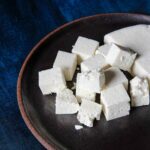Skoda Kushaq
This is the most important new car for Skoda in many years. It is the first product to be part of their new ‘India 2.0’ strategy to develop India-specific models rather than bringing a product from their global portfolio and adapting it to the Indian landscape, as they always did before. Given our tax structure, most of the time when a manufacturer introduces an international model here, it is either too expensive for the masses or there is very little profitability for the manufacturer. And prices go up a lot during the lifetime of the car if the components aren’t localized.
The Kushaq is based on the MQB A0 platform which underpins the new Polo, Skoda Fabia, Audi A1, and other superminis. The India-specific MQB A0 IN platform has been stretched to make it more spacious. The big hump in the rear floor pan has also been removed meaning that there won’t be an all-wheel-drive version of the Kushaq here. It has almost 93 percent localization as of now.
The Kushaq has a shrunken Tiguan look all over it with clean Germanic lines. At 4.2 metres, it is about as long as a Creta and has the longest wheelbase (2651mm) in its class, but looks a size smaller because of the tighter skin. The front-end styling is similar to the Kamiq and has the characteristic Skoda look to it. The rear three quarters look more compact than the proportions suggest and the rear-end styling is very clean and simple. The 17 inches ‘Atlas’ wheels look neat and there are minor lashings of chrome on the car which every manufacturer thinks that we Indians like. Overall the styling is a ‘please-all, offend-none’ affair and that’s half the job done.
Step inside and you are treated to an interior that is half-familiar and half new. It has the typical European familiarity where everything falls to hand and you feel right. The two spoke steering with rotary knobs is similar to the one in the new Octavia and feels CBU quality. The AC vents are said to have been made larger for India. The dials are very basic and the infotainment interface seems to be from the last-gen Skodas. The upper part of the dashboard and the centre console are very different designs from what we have seen in Skodas. What is also different is the material quality that isn’t remarkable, in places. Sure, it’s not bad for its segment, just that we are spoilt by the top quality of Skoda and VW cars over the years. The front seats are great with good support, but the artificial leather cover looks more like an aftermarket addition and is loose-fitting in places. There are other cost-cutting bits where the plastic shroud around the sunroof is missing and the mechanism inside is visible. The front seats are ventilated, but the fans inside get quite loud and sound like a radio playing static. The rear seats are good with decent legroom, offer the right support, and have a near-perfect backrest angle. But it is not wide enough to seat three adults abreast, so the near-flat floor makes no big difference here. The boot, at 385 litres, is smaller than the competition’s.
Equipment-wise, the Kushaq gets ESP, six airbags, collision warning, brake assist, electronic diff lock, traction control, tire pressure monitoring, wireless Apple Car Play, and Android Auto, ventilated seats, etc. However, it misses out on a lot of stuff that other cars in the segment offer, like a powered driver seat, panoramic sunroof, 360-degree camera, driving modes, connected car tech, etc.
There are two choices of engines for the Kushaq, each with its own automatic and manual transmissions. The 1.0L 3cyl engine is the same as in the Polo and Vento but has 115bhp and 178Nm. It idles very smoothly for a 3 cylinder and it is only when you rev it harder do you feel the thrum. 0-100kmph comes up in 11.3 seconds and the automatic take two more seconds to hit the ton. The manual transmission is slick and the clutch is well-weighted, but it is best to go for the 6 speed automatic. It also masks the engine’s turbo lag below 1800rpm and makes it feel stronger than the 1.0L capacity suggests. This Aisin sourced unit has an unusually fast creep that takes some getting used to. But in town, it is easy to drive the Kushaq leaving the gearbox to its duties. When you want to drive fast, it feels a bit out of its comfort zone though.
That’s where the 1.5 litre 4 cylinder Kushaq fits in. It is the same engine that came in the Karoq and T-Roc. The engine makes 150bhp and 250Nm and that makes it a willing performer. 0-100kmph comes up in 9.5 seconds and the DSG is a tenth of a second faster. The engine feels a bit strained near its redline but the midrange is strong and it pulls well. It also employs cylinder deactivation on two cylinders for more fuel saving. The 7 speed DQ200 dual-clutch gearbox is a bit jerky and confused at some speeds. It does its job fairly well and gives a strong surge in each gear, letting you use the paddles for some extra control. The six-speed manual is even more fun, rowing through the gears, stretching the engine a fair bit every time.
The Kushaq rides well over most roads. The suspension feels taut and well-judged for the most part. There is a bit of firmness, but then it can take most potholes well and feels very composed on broken roads. Straight-line stability is excellent and gives you massive confidence at high speeds. The steering has the right amount of assist and gives a decent feel. You can hurl it through a set of corners faster than other cars in its class. Even with disc brakes at the rear, there is adequate stopping power.
The Kushaq has its breadth of abilities – decent space, European build, good driving dynamics, lots of safety kit – which buyers have been longing for in this segment. But it also comes at a premium with prices ranging from Rs.12.4-21.5 lakhs on-road. The 1.0L variant, although it may seem like a Venue/Sonet rival in terms of engine capacity, is aimed at the 1.5 litre naturally aspirated versions of the Creta/Seltos while the 1.5 TSI is aimed at their turbocharged variants. There is no diesel option which is a deal-breaker for some. But if you want a good-to-drive, well-built, decently equipped midsize SUV that doesn’t skimp on safety features, the Kushaq fits the bill perfectly.
Pic Courtesy: google/ images are subject to copyright








